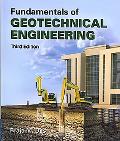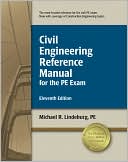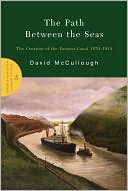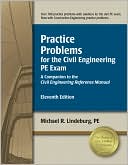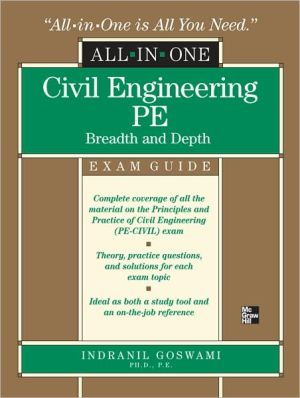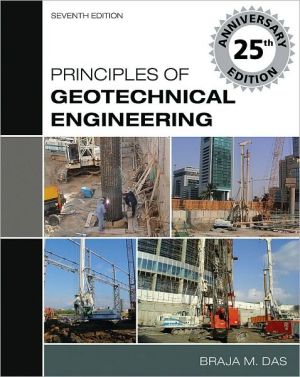Fundamentals of Geotechnical Engineering
Search in google:
Fundamentals of Geotechnical Engineering combines the essential components of Braja Das' market leading texts, Principles of Geotechnical Engineering and Principles of Foundation Engineering. The text includes the fundamental concepts of soil mechanics as well as foundation engineering without becoming cluttered with excessive details and alternatives. Foundations. features a wealth of worked out examples, as well as figures to help students with theory and problem solving skills. Das maintains the careful balance of current research and practical field applications that has made his books the leaders in the field.
1 - Geotechnical Engineering - A Historical Perspective1.1 Geotechnical Engineering Prior to the 18th Century1.2 Preclassical Period of Soil Mechanics (1700-1776)1.3 Classical Soil Mechanics - Phase I (1776-1856)1.4 Classical Soil Mechanics - Phase II (1856-1910)1.5 Modern Soil Mechanics1.6 Geotechnical Engineering after 1927 2 - Soil Deposits and Grain - Size Analysis2.1 Natural Soil Deposits - General2.2 Residual Soil2.3 Gravity Transported Soil2.4 Alluvial Deposits2.5 Lacustrine Deposits2.6 Glacial Deposits2.7 Aeolian Soil Deposits2.8 Organic Soil2.9 Soil-Particle Size2.10 Clay Minerals2.11 Specific Gravity2.12 Mechanical Analysis of Soil2.13 Effective Size, Uniformity Coefficient, and Coefficient of Gradation 3 - Weight-Volume Relationships, Plasticity, and Soil Classification3.1 Weight-Volume Relationships3.2 Relationships among Unit Weight, Void Ratio, Moisture Content, and Specific Gravity3.3 Relationships among Unit Weight, Porosity, and Moisture Content3.4 Relative Density3.5 Consistency of Soil3.6 Activity3.7 Liquidity Index3.8 Plasticity Chart3.9 Soil Classification 4 - Soil Compaction4.1 Compaction - General Principles4.2 Standard Proctor Test4.3 Factors Affecting Compaction4.4 Modified Proctor Test4.5 Empirical Relationships4.6 Field Compaction4.7 Specifications for Field Compaction4.8 Determination of Field Unit Weight after Compaction4.9 Special Compaction Techniques4.10 Effect of Compaction on Cohesive Soil Properties 5 - Hydraulic Conductivity and Seepage HydraulicConductivity5.1 Bernoulli's Equation5.2 Darcy's Law5.3 Hydraulic Conductivity5.4 Laboratory Determination of Hydraulic Conductivity5.5 Empirical Relations for Hydraulic Conductivity5.6 Equivalent Hydraulic Conductivity in Stratified Soil5.7 Permeability Test in the Field by Pumping from Wells Seepage5.8 Laplace's Equation of Continuity5.9 Flow Nets 6 - Stresses in Soil Mass Effective Stress Concept6.1 Stresses in Saturated Soil without Seepage6.2 Stresses in Saturated Soil with Seepage6.3 Effective Stress in Partially Saturated Soil6.4 Seepage Force6.5 Heaving in Soil Due to Flow around Sheet Piles Vertical Stress Increase Due to Carious Types of Loading6.6 Stress Cause by a Point Load6.7 Westergaard's Solution for Vertical Stress Due to a Point Load6.8 Vertical Stress Caused by a Line Load6.9 Vertical Stress Caused by a Line Load of Finite Length6.10 Vertical Stress Caused by a Strip Load (Finite Width and Infinite Length)6.11 Vertical Stress below a Uniformly Loaded Circular Area6.12 Vertical Stress Caused by a Rectangularly Loaded Area6.13 Solutions for Westergaard Material 7 - Consolidation7.1 Fundamentals of Consolidation7.2 One-Dimensional Laboratory Consolidation Test7.3 Void Ratio-Pressure Plots7.4 Normally Consolidated and Overconsolidated Clays7.5 Effect of Disturbance on Void Ratio - Pressure Relationship7.6 Calculation of Settlement from One-Dimensional Primary Consolidation7.7 Compression Index and Swell Index7.8 Settlement from Secondary Consolidation7.9 Time Rate of Consolidation7.10 Coefficient of Consolidation7.11 Calculation of Primary Consolidation Settlement under a Foundation7.12 Skempton-Bjerrum Modification for Consolidation Settlement 7.13 Precompression - General Considerations7.14 Sand Drains 8 - Shear Strength of Soil8.1 Mohr-Coulomb Failure Criteria8.2 Inclination of the Plane of Failure Caused by Shear Laboratory Determination of Shear Strength Parameters8.3 Direct Shear Test8.4 Triaxial Shear Test8.5 Consolidated-Drained Test8.6 Consolidated-Undrained Test8.7 Unconsolidated-Undrained Test8.8 Unconfirmed Compression Test of Saturated Clay8.9 Sensitivity and Thixotropy of Clay8.10 Anisotropy in Undrained Shear Strength 9 - Slope Stability9.1 Factor of Safety9.2 Stability of Infinite Slopes9.3 Finite Slopes9.4 Analysis of Finite Slope with Circularly Cylindrical Failure Surface - General9.5 Mass Procedure of Stability Analysis (Circularly Cylindrical Failure Surface)9.6 Method of Slices9.7 Bishop's Simplified Method of Slices9.8 Analysis of Simple Slopes with Steady-State Seepage9.9 Mass Procedure for Stability of Clay Slopes with Earthquake Forces 10 - Subsurface Exploration10.1 Subsurface Exploration Program10.2 Exploratory Borings in the Field10.3 Procedures for Sampling Soil10.4 Observation of Water Levels 10.5 Vane Shear Test10.6 Cone Penetration Test10.7 Pressuremeter Test (PMT)10.8 Dilatometer Test10.9 Coring of Rocks10.10 Preparation of Boring Logs10.11 Soil Exploration Report 11 - Lateral Earth Pressure11.1 Earth Pressure at Rest11.2 Rankine's Theory of Active and Passive Earth Pressures11.3 Diagrams for Lateral Earth Pressure Distribution against Retaining Walls11.4 Rankine's Active and Passive Pressure with Sloping Backfill11.5 Retaining Walls with Friction11.6 Coulomb's Earth Pressure Theory11.7 Passive Pressure Assuming Curved Failure Surface in Soil 12 - Shallow Foundations - Bearing Capacity and Settlement Ultimate Bearing Capacity of Shallow Foundations12.1 General Concepts 12.2 Ultimate Bearing Capacity Theory12.3 Modification of Bearing Capacity Equations for Water Table12.4 The Factor of Safety12.5 Eccentrically Loaded Foundations Settlement of Shallow Foundations12.6 Types of Foundations Settlement12.7 Elastic Settlement12.8 Range of Material Parameters for Computing Elastic Settlement12.9 Settlement of Sandy Soil: Use of Strain Influence Factor12.10 Allowable Bearing Pressure in Sand Based on Settlement Consideration12.11 Common Types of Mat Foundations12.12 Bearing Capacity of Mat Foundations12.13 Compensated Foundations 13 - Retaining Walls and Braced Cuts Retaining Walls13.1 Retaining Walls - General13.2 Proportioning Retaining Walls13.3 Application of Lateral Earth Pressure Theories to Design 13.4 Check for Overturning13.5 Check for Sliding along the Base13.6 Check for Bearing Capacity Failure Mechanically Stabilized Retaining Wall13.7 Soil Reinforcement 13.8 Considerations in Soil Reinforcement13.9 General Design Considerations13.10 Retaining Walls with Metallic Strip Reinforcement13.11 Sep-by-Step Design Procedure using Metallic Strip Reinforcement13.12 Retaining Walls with Geotextile Reinforcement13.13 Retailing Walls with Geogrid Reinforcement Braced Cuts13.14 Braced Cuts - General13.15 Lateral Earth Pressure in Braced Cuts13.16 Soil Parameters for Cuts in Layered Soil13.17 Design of Various Components of a Braced Cut13.18 Heave of the Bottom of a Cut in Clay13.19 Lateral Yielding of Sheet Piles and Ground Settlement 14 - Deep Foundations - Piles and Drilled Shafts Pile Foundations14.1 Need for Pile Foundations14.2 Types of Piles and Their Structural Characteristics14.3 Estimation of Pile Length14.4 Installation of Piles14.5 Load Transfer Mechanism14.6 Equations for Estimation of Pile Capacity14.7 Calculation of qp - Meyerhof's Method14.8 Frictional Resistance14.9 Allowable Pile Capacity14.10 Load - Carrying Capacity of Pile Point Resting on Rock14.11 Elastic Settlement of Piles14.12 Pile-Driving Formulas14.13 Negative Skin Friction 14.14 Group Piles - Efficiency 14.15 Elastic Settlement of Group Piles14.16 Consolidation Settlement of Group Piles Drilled Shafts14.17 Types of Drilled Shafts14.18 Construction Procedures14.19 Estimation of Load-Bearing Capactiy14.20 Settlement of Drilled Shafts at Working Load14.21 Load Bearing Capacity Based on Settlement
